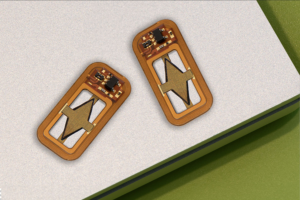Will thought become the next interface?
Imagine controlling a robotic arm or computer with nothing but your thoughts. This idea, once confined to science fiction, has now emerged into reality thanks to advances in brain-computer interfaces (BCIs). Companies such as Neuralink, founded by Elon Musk, are rapidly pushing this technology forward. Although these innovations promise revolutions in medicine, communication, and daily life, they also pose questions regarding safety and ethics. To better understand the potential and concerns surrounding BCIs, we must first answer the question: What are brain-computer interfaces?
A brain-computer interface (BCI), also known as a brain-machine interface, is a system that enables a connection (direct or indirect) between the human brain and an external device. Through this connection, users perform actions solely through their brain activity without the involvement of muscle movements (1).
In the first diagram, the basic process of a BCI is illustrated: the brain signals are amplified (amplification simplifies the extraction of the signal’s characteristics), then translated into a command that operates the device. The outcome of the command is fed back to the user, who perceives the reaction (1). This feedback loop in the system is essential because it guides the user to control the interface more effectively.

The basic process of a Brain-Computer Interface (1)
BCIs are usually categorized as either non-invasive or invasive (1). Non-invasive BCIs often utilize electroencephalography (EEG) to track brain activity from the scalp. Electroencephalography, a process that uses electrodes pasted onto the scalp (typically small metal disks with thin wires), detects the electric charges generated by brain activity (2). The brain activity’s data undergoes interpretation for wellness or for controlling external devices.
Invasive BCIs, on the other hand, rely on signals received from the brain directly by using an electrocorticography (ECoG). ECoG is an invasive process that mirrors the brain’s activity by placing macro electrodes (larger electrodes for recording or stimulating brain activity) directly on the cortex. Most of the time, invasive BCIs carry risks. For example, they can only track data for short amounts of time before running the risk of tissue damage. The sole gain of invasive BCIs is a greater signal strength. Due to increased signal strength and higher amplitude, the data output from invasive methods is more accurate (1).
While the basics of BCIs demonstrate how humans can tap into brain activity’s interactions with external devices, the future holds far more ambitious applications. Neuralink 1, developed by Neuralink, is one such BCI pushing the boundaries: it uses ultra-thin wires—each containing 1,024 electrodes—to detect neural signals. BCIs such as Neuralink 1 have the potential to enable individuals with paralysis to regain motor function (3). However, the road to these breakthroughs is scattered with challenges. Neuralink’s device remains in preclinical testing. Concerns about safety, ethical implications, and regulatory approval persist (3). Although widespread use may be decades away, existing advancements in BCIs hold the potential to augment the human experience.
Works Cited
- Kawala-Sterniuk, A., Browarska, N., Al-Bakri, A., Pelc, M., Zygarlicki, J., Sidikova, M., Martinek, R., & Gorzelanczyk, E. J. (2021). Summary of over Fifty Years with Brain-Computer Interfaces—A Review. Brain Sciences, 11(1), 43. https://doi.org/10.3390/brainsci11010043
- John Hopkins Medicine. (2019). Electroencephalogram (EEG). John Hopkins Medicine. https://www.hopkinsmedicine.org/health/treatment-tests-and-therapies/electroencephalogram-eeg
- Purvish Mahendra Parikh, & Ajit Venniyoor. (2024). Neuralink and Brain–Computer Interface—Exciting Times for Artificial Intelligence. South Asian Journal of Cancer. https://doi.org/10.1055/s-0043-1774729
Images Cited
- Kawala-Sterniuk, A., Browarska, N., Al-Bakri, A., Pelc, M., Zygarlicki, J., Sidikova, M., Martinek, R., & Gorzelanczyk, E. J. (2021). Summary of over Fifty Years with Brain-Computer Interfaces—A Review. Brain Sciences, 11(1), 43. https://doi.org/10.3390/brainsci11010043








Comments are closed.